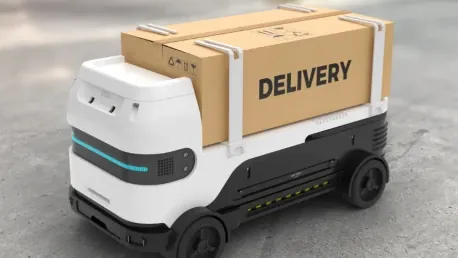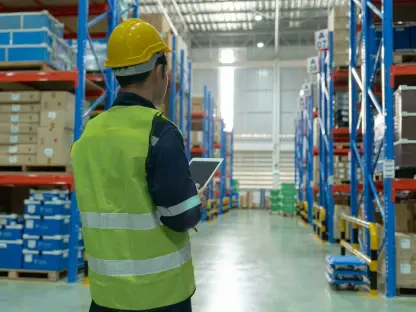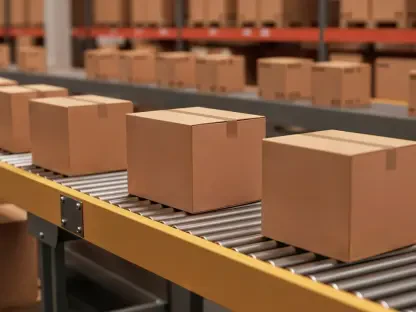In a groundbreaking move for the logistics industry, GXO Logistics, Inc. and Reflex Robotics have partnered to integrate advanced robotics into warehouse operations. This collaboration aims to revolutionize logistics by employing cutting-edge automation technologies, making processes more efficient and cost-effective.
Integration of Robotics in Logistics
Robots-as-a-Service (RaaS) Model
The adoption of the RaaS model by GXO marks a significant shift in how logistics providers are implementing technology. This model allows companies to scale their use of robotics without the hefty upfront costs. Instead, businesses can flexibly subscribe to robotic services as needed. For GXO, this means they can quickly deploy robots in their operations to handle varying workloads, making this a highly scalable solution. The RaaS model is particularly appealing because it doesn’t require significant capital investment. GXO can seamlessly integrate these robots to meet demand without long-term financial commitments, which is crucial in a fast-paced industry where the need for agility and speed is paramount.
Moreover, this approach allows logistics providers to adapt to fluctuations in demand, something crucial in the modern, unpredictable marketplace. By subscribing to robotic services rather than owning the robots, companies like GXO can better manage resources and respond to market shifts without the burden of depreciation and maintenance costs. This model also opens doors for smaller enterprises to gain access to top-tier robotic solutions without prohibitive costs, fostering an environment where technological adoption is democratized. The shift to RaaS not only streamlines operational efficiencies but also makes high-tech solutions accessible to a broader range of businesses within the logistics sector.
Reflex Robotics’ Capabilities
Reflex Robotics has developed advanced humanoid robots that can become operational within just 60 minutes. These robots are designed to perform a range of repetitive tasks, such as tote transfers and product picking, with a high degree of autonomy. Over time, the robots learn and adapt from human demonstrations, making them increasingly efficient. By leveraging Reflex Robotics’ technology, GXO can streamline its warehouse operations. The robots’ ability to learn autonomously ensures they can adapt to different tasks and warehouse environments, which is a significant advantage. This capability reduces downtime and improves overall efficiency in the logistics process.
Furthermore, the adaptability of Reflex’s robots allows them to excel in varied environments and handle a multitude of tasks without needing extensive reprogramming. This versatility is crucial in warehouses where different products require distinct handling procedures. The robots’ ability to quickly assimilate and execute these different tasks not only speeds up operations but also minimizes human error. Their implementation helps in creating a more resilient supply chain capable of withstanding disruptions. By minimizing the resource expenditure needed for training and adaptability, Reflex Robotics provides GXO with a robust tool to significantly elevate operational efficiency and reliability.
Pilot Deployment and Operational Incubator Program
Omnichannel Fulfillment Pilot
GXO’s operational incubator program is currently piloting Reflex’s humanoid robotic solutions in an omnichannel fulfillment center for a Fortune 100 retailer. This real-world testing phase is designed to validate the technology and refine its applications. The results from this pilot will inform potential wider deployment across GXO’s global operations, which is crucial for understanding how these robots can handle the complexities of omnichannel fulfillment. By participating in this real-world scenario, the Reflex Robots can be tested under various conditions, ensuring they meet operational standards and possess the ability to handle complex tasks.
The pilot program’s emphasis on real-world conditions offers a starkly practical lens through which to assess the robots’ functionality and adaptability. This phase provides invaluable data about how Reflex’s technology can coexist with human labor, adapt to different tasks, and operate seamlessly under diverse conditions. The omnichannel fulfillment context is particularly demanding, requiring high precision and flexibility, thereby serving as an ideal proving ground for evaluating the robots’ capacities. This holistic assessment ensures that when GXO rolls out the technology on a larger scale, the robots will have already met rigorous performance benchmarks.
Scaling and Refinement
The operational incubator program allows GXO to refine the use cases of Reflex’s robotics solutions. This continuous improvement process is essential for ensuring the technology can scale effectively. The focus is on easing capacity constraints and enabling the workforce to undertake more fulfilling roles, which can enhance productivity and job satisfaction. GXO’s approach of using an incubator program to test and refine the robots highlights their commitment to deploying robust and practical technologies. This iterative process ensures that by the time the robots are widely deployed, they will have undergone rigorous testing and refinement.
Through iterative cycles of testing and feedback, the robots can be fine-tuned to meet the specific needs and challenges of different logistics environments. This methodical approach not only enhances the reliability of the technology but also ensures that it can be scaled across various operations with minimal disruption. As the robots take over more monotonous tasks, the human workforce can focus on more strategic activities, promoting a more engaging and productive work environment. The ability to pivot swiftly and adapt to new conditions further solidifies the benefits of this incubator approach, helping GXO maintain its competitive edge in an increasingly automated industry landscape.
Long-term Objectives and Industry Trends
Enhancing Operational Efficiency
One of the main goals of GXO and Reflex Robotics’ collaboration is to boost operational efficiency by automating repetitive tasks. By doing so, the workforce can shift their focus to more strategic and engaging activities. This transition not only improves efficiency but also enhances job satisfaction, leading to a more motivated workforce. The logistics industry is increasingly moving towards automation to stay competitive. The integration of humanoid robots represents a significant advancement, providing a glimpse into the future of warehouse operations. Automation helps to manage capacity constraints and improve throughput, which are critical factors in the industry.
Robots are well-suited for repetitive tasks that demand consistency and precision, which human workers often find monotonous. By reallocating these tasks to robots, GXO not only enhances overall productivity but also reduces the likelihood of errors. Moreover, automation allows for round-the-clock operations, further increasing throughput and optimizing resource utilization. These operational gains also indirectly contribute to improving the work environment, as employees are relieved from physically taxing or tedious tasks and are thus able to engage in more rewarding activities. This combination of technological efficiency and human engagement sets a new benchmark in warehousing and logistics operations.
Flexible Business Models in Logistics
The adoption of the RaaS model by GXO is part of a broader trend towards flexible business models in logistics. This approach allows companies to implement advanced technologies without the burden of high initial investments. It also provides the flexibility to scale operations up or down based on demand. This trend underscores the importance of agility in logistics. As the industry continues to evolve, the ability to quickly adapt to changes and integrate new technologies will be a significant competitive advantage. The RaaS model provides a framework for logistics providers to remain nimble and responsive to market demands.
This business model’s inherent flexibility translates to a more resilient supply chain capable of withstanding demand surges and market disruptions. Companies are no longer bound by the constraints of traditional ownership, allowing them to focus capital on growth and expansion. The RaaS model transforms how logistics companies forecast and manage their resources, offering the ability to pay only for what is needed. As technology continues to evolve, this adaptable framework ensures that logistics providers can upgrade or replace their robotic assets without the complications and costs associated with traditional procurement and ownership models, fostering a culture of continuous improvement and innovation.
Collaboration and Innovation
In a pioneering initiative for the logistics field, GXO Logistics, Inc. has teamed up with Reflex Robotics to bring advanced robotics into warehouse operations. This strategic partnership is set to transform logistics by deploying state-of-the-art automation technologies, significantly boosting efficiency and cutting costs. By integrating robotics, GXO Logistics intends to streamline numerous processes that have traditionally relied on manual labor, thereby improving accuracy and speed. These robots can handle tasks such as picking, packing, and moving goods with impressive precision and reliability.
The collaboration between GXO Logistics and Reflex Robotics highlights a broader trend in the industry toward embracing technology to meet the growing demands of e-commerce and distribution. As consumer expectations for rapid delivery rise, the logistics sector must adapt to ensure timely and accurate fulfillment. Leveraging advanced robotics allows companies like GXO Logistics to stay competitive and meet these challenges head-on. This partnership not only underscores the potential of automated solutions but also sets a new standard for operational excellence in the logistics industry.









